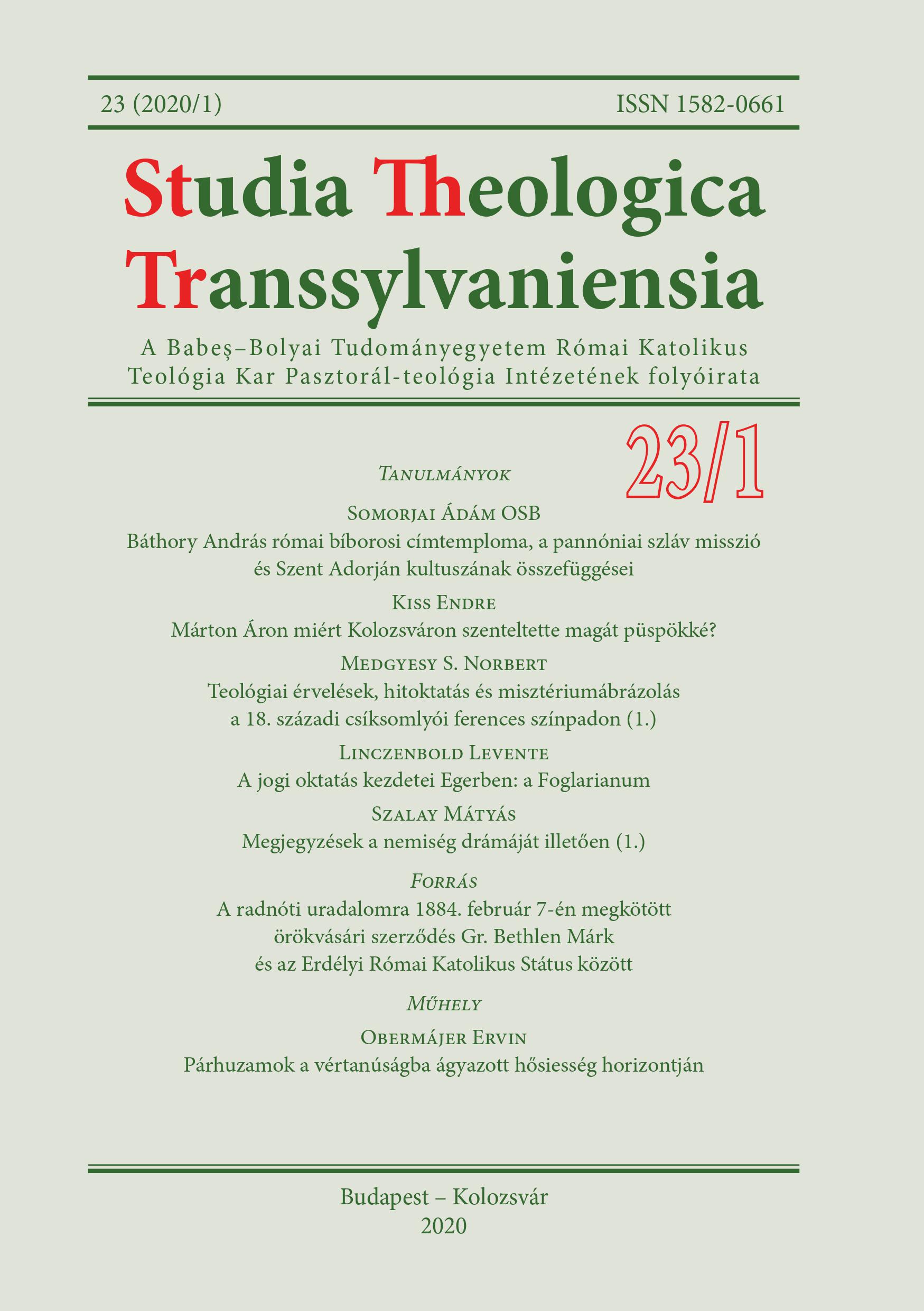Báthory András római bíborosi címtemploma, a pannóniai szláv misszió és Szent Adorján kultuszának összefüggései
The relationship between the titular church of Cardinal András Báthory, the Slavic mission in Pannonia, and the cult of Saint Hadrian
Author(s): Ádám SomorjaiSubject(s): Christian Theology and Religion, History of Church(es), Theology and Religion
Published by: Institutul Teologic Romano-Catolic Alba Iulia
Keywords: Mosaburg/Zalavár; Pannonia; Pribina; Saint Hadrian the Martyr; Diocletian persecution; Saint Stephen King of Hungary; Salzburg mission; Cardinal András Báthory;
Summary/Abstract: In the year 2019 were celebrated the thousand years of the founda- tion of the Zalavár Benedictine Monastery under the Patrocinium of Saint Hadrian the Martyr on the western shore of the Lake Balaton in Hungary, and this is an occasion to contemplate the significance of this place and of this heritage. Though the Abbey is not existent after 1950, its beginnings are more important in the Carolingian Empire, after the Avar Period, as the Salzburg Benedictine missionaries christianized the territory and as the Slavic Prince Pribina came under Carolingian rule. It was this time to found the first church of Saint Hadrian, a Martyr in Nicomedia in the times of Diocletian’s persecution and which relics were translated to Rome in the 5th or 6th Century. The cult became important in this Church, which building was identical with the Roman Curia, i. e. the Senate, and the consecration of this church on September 8th became the feast of the Saint in the Occident. This became a titular church and was the titular church of the Transylvanian Cardinal András Báthory, in the 16th century. Turning to Pribina, he gathered Saints Cyril and Methodius and their pupils in this church and against the opposition of the Archbishops of Salzburg, gained Pontifical permission of Pope Hadrian II to celebrate Christian liturgy in Slavic language in his Province and the nomination of Methodius to Metropolite of Pannonia. This early beginnings were important for the Hungarian christianization and explain why Saint Stephen the first King of Hungary received so easily the Roman blessings, i. e. the Holy Crown and the erection of the Metropoly of Esztergom in his kingdom. In medieval Hungary the name of the kingdom was alternating “Hungary” and “Pannonia”, in Christian inter- pretation “Pannonia Sacra”. This aspect could help to concile Slavic (e. g. Slovakian) and Hungarian interpretation of their common history. This history is living today in the use of the word “Church”, which originates of the Latin word “Castellum” (etymon of the city name “Keszthely” at the Lake Balaton), which is in the Western Slavic languages: “Kosciól” (Polish), “Kostel” (Czech and Slovak). In Polish means both as building and as gathering of people, in Czech and Slovak only as building. In Hungarian the use of the Latin word “templum” is rooted, as building. Common heritage of the ancient Roman word “Castellum”.
Journal: Studia Theologica Transsylvaniensia
- Issue Year: 23/2020
- Issue No: 1
- Page Range: 9-23
- Page Count: 15
- Language: Hungarian

